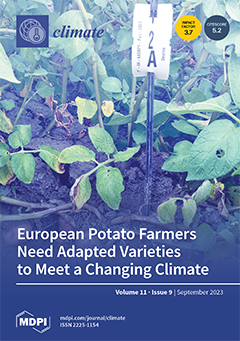A distinction is made between data rescue (i.e., copying, digitizing, and archiving) and data recovery that implies deciphering, interpreting, and transforming early instrumental readings and their metadata to obtain high-quality datasets in modern units. This requires a multidisciplinary approach that includes: palaeography and
[...] Read more.
A distinction is made between data rescue (i.e., copying, digitizing, and archiving) and data recovery that implies deciphering, interpreting, and transforming early instrumental readings and their metadata to obtain high-quality datasets in modern units. This requires a multidisciplinary approach that includes: palaeography and knowledge of Latin and other languages to read the handwritten logs and additional documents; history of science to interpret the original text, data, and metadata within the cultural frame of the 17th, 18th, and early 19th centuries; physics and technology to recognize bias of early instruments or calibrations, or to correct for observational bias; and astronomy to calculate and transform the original time in canonical hours that started from twilight. The liquid-in-glass thermometer was invented in 1641 and the earliest temperature records started in 1654. Since then, different types of thermometers have been invented, based on the thermal expansion of air or selected thermometric liquids with deviation from linearity. Reference points, thermometric scales, and calibration methodologies were not comparable, and not always adequately described. Thermometers had various locations and exposures, e.g., indoor, outdoor, on windows, gardens or roofs, facing different directions. Readings were made only one or a few times a day, not necessarily respecting a precise time schedule: this bias is analysed for the most popular combinations of reading times. The time was based on sundials and local Sun, but the hours were counted starting from twilight. In 1789–1790, Italy changed system and all cities counted hours from their lower culmination (i.e., local midnight), so that every city had its local time; in 1866, all the Italian cities followed the local time of Rome; in 1893, the whole of Italy adopted the present-day system, based on the Coordinated Universal Time and the time zones. In 1873, when the International Meteorological Committee (IMC) was founded, later transformed into the World Meteorological Organization (WMO), a standardization of instruments and observational protocols was established, and all data became fully comparable. In dealing with the early instrumental period, from 1654 to 1873, the comparison, correction, and homogenization of records is quite difficult, mainly because of the scarcity or even absence of metadata. This paper deals with this confused situation, discussing the main problems, but also the methodologies to recognize missing metadata, distinguish indoor from outdoor readings, correct and transform early datasets in unknown or arbitrary units into modern units, and, finally, in which cases it is possible to reach the quality level required by the WMO. The aim is to explain the methodology needed to recover early instrumental records, i.e., the operations that should be performed to decipher, interpret, correct, and transform the original raw data into a high-quality dataset of temperature, usable for climate studies.
Full article





